Best 7x50 Binoculars for Astronomy
Because the planets, stars, comets, and even the moon are so far away from us, many people logically assume that you need a very high magnification binocular for astronomy and indeed giant high powered binoculars like a 15x70 or even a 25x100 are important for and commonly used for astronomy.
However, as well as these, the combination of a modest 7x power with the reasonably large, but not giant 50mm objectives is also one of the most frequently used setups for observing the night sky using binoculars.
So, why is this?
In this article, I explore and explain the reasons why the 7x50 configuration is so popular with astronomers and then at the foot of this page, I also take a look at some of the best 7x50 binoculars for astronomy currently on the market:
Why 7x50 Binoculars for Astronomy?
It is true that the more magnification you have, the more image detail you can potentially see. Thus in regards to astronomy, higher powers help you to see deeper into space to reveal more objects or view more details on the surface of the moon for example.
Bigger is not always better
However, increasing the magnification also brings with it a number of drawbacks and so as with many things in life, you have to make some choices and compromises depending on your needs and exactly what you want to get from your instrument.
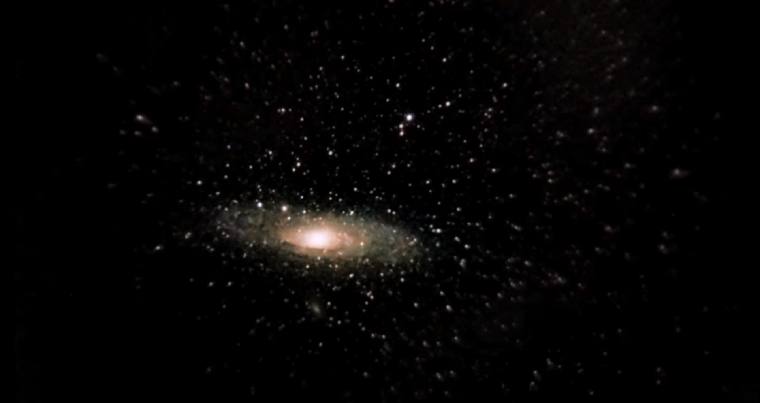
So What can you see with a 7x50 Binocular?
This is a question I am frequently asked, as well as things like how far can you see with a 7x50 binocular?
The literal answer is you can see 3 million light-years away and more! Indeed you don’t even need binoculars to do this as you can see the Andromeda galaxy M31 with the naked eye.
But by adding magnification through the use of binoculars, you will add detail. However, don’t expect Hubble Telescope levels of detail!
So with just your eyes, Andromeda looks like a dim, fuzzy star, but just by adding a pair of 7x50 binoculars, you can see a small elliptical cloud. A high powered telescope will add a little more detail and so on.
Without example images and video, it is hard to explain. Luckily I have managed to obtain excellent and accurate example photos and videos. So for more take a look at this guide:
Using 7x50 Binoculars for Astrophotography
If you want to see something incredible and which shows you what is possible with just a cheap pair of 7x50 binoculars, a tripod, a mobile phone and a bunch of software, take a look at this excellent video by Astrobiscuit (Rory):
Whilst this video shows what is possible, the main advantage of using a 7x50 binocular is that they add more detail and more stars to what you can see without binoculars, but at the same time they are just so easy to use and thus make scanning the skies above at night a joy:
Field of View
As you increase the power or “zoom in”, the width (and height) of your overall view decreases. This is fine if you want to observe the finer details on the surface of the moon. Although, a narrow field of view makes it harder to locate objects and at very high powers it can be difficult to locate the object you wish to view. So at high powers, it can be hard to locate a particular star or planet because you lose all your reference points around it.
So for example, if you are looking for The Pleiades (Seven Sisters) and you know that to find them, you need to look for the constellation of Taurus this is fine and not too difficult with just your eyes. However, with a very high powered instrument, you will not be able to see the whole of Taurus and thus you lose your reference point making the Seven Sisters much harder to locate.
This is one of the main reasons why many spotting scopes have a variable magnification eyepiece as you can start in a low power setting and use it to find and then lock onto the object you wish to observe and then zoom in to get more detail.
However, because of the complications of viewing through two eye-pieces at once, in most cases, “Zoom Binoculars” are not really recommended.
So a low power like that on a 7x50 binocular gives you a wide view, making it much easier to scan the night skies and find particular points of interest. The wider view also means you can view entire constellations or star clusters in their entirety without the need to pan about.
Exit Pupil & Image Brightness
The exit pupil diameter or the size of the shaft of light exiting the eyepiece is critical in determining how bright an image you will see, especially in low light situations when your eye’s pupils are dilated and thus is incredibly important when considering what binoculars to get for stargazing.

The exit pupil size is directly related to both the magnification and the size of the objective lenses.
So a 7x50 binocular has a 7.1mm exit pupil (50÷7). This is large enough to provide your eyes with enough light even when the pupils are fully dilated.
However, let’s say for example we increase the magnification to 12x and keep the objective lenses the same size. The exit pupil or shaft of light exiting the binocular would now only be 4.2mm (50÷12), which is much smaller and far less than ideal in low light scenarios.
Size & Weight
To increase the exit pupil in the example above, we could, of course, increase the objective lens size. Which is exactly what many high powered astronomy binoculars do. So popular higher powered Astro binoculars include configurations like 10x50, 20x70 or even 25x100. However all of these have smaller exit pupils than the 7x50 configuration and thus whilst you get more detail, the image is probably not going to seem quite as bright to most people.
Increasing lens sizes not only increases the cost, but also the size and weight of the binocular. This is fine if you don’t mind setting up your binocular with a tripod. However, should you want a binocular for stargazing using just your hands and one that you can quickly take out and carry anywhere, then the 50mm size provides a good compromise between portability and light gathering ability.
Image Shake
Lastly, there is the problem of keeping the view still. No matter how powerful the magnification you have, you will miss all the detail in it if you can’t stop the view from shaking about. So, in order to view more detail, you need a shake-free image.
The problem here is that the magnification of the image also magnifies any movement, so the higher the power, the harder it is to keep the view still. So as well as taking the weight off your arms, this is the other reason why you need a tripod when using high powered/giant binoculars for astronomy.
So here once again, the 7x50 setup makes it much easier to keep a steady view and thus perfect for use in the hands.
Ideal Uses
So taking into account their particular strengths, a 7x50 binocular makes an ideal, no hassle, take with you anywhere (like on a camping trip) binocular that is quick and easy to use without having to lug about or set up a tripod. It is also great for scanning the skies looking for a particular cluster or constellation.
At home, I also like to use my 7x50 in combination with either a giant high powered binocular or my telescope that I have set up on the tripod next to me.
Multi-Purpose Instrument
The other advantage of a 7x50 is that the combination of a very wide view and bright optics also makes a great low light general use, wildlife and particular bird watching binocular.
So long as you think about waterproofing, this setup is also ideal for marine use. Once again, the lower power once again makes it easier to keep the image still on the unsteady platform of a boat/yacht on the water and is great for scanning the horizon.
Best 7x50 Binoculars for Astronomy
So now that we have discovered why 7x50’s are in some case the best binoculars for stargazing, let’s take a look at some of the options out there in a range of price categories:
Cheap 7x50 Astronomy Binoculars – Under $50 / £50
Whilst better quality instruments with their improved optics and coatings will most certainly offer you a higher quality and brighter view, if you are just getting started with binocular astronomy, or just want a low-cost backup to take along anywhere or use next to your scope or high power device then these are worth taking a closer look at:
Celestron Cometron 7x50 Binoculars
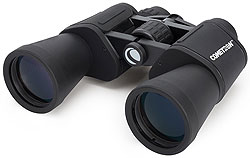 These very low cost binoculars from Celestron offer you a basic, but good starting point as they have most of the important bases covered and a reasonably wide field of view:
These very low cost binoculars from Celestron offer you a basic, but good starting point as they have most of the important bases covered and a reasonably wide field of view:
Main Features
- Aluminum housing
- BK7 porro prisms
- Multi-coated optics
- Fold-down eyecups
- Tripod-adaptable
- Field of view: 357ft @1000 yds / 119m @ 1000m
What’s Missing
Understandably at this very low cost, you can’t expect to find all the features and components used on higher end products. So what are the main things that are missing?
Not Fully Multi-Coated – whilst the optics are Multi-Coated, they are not Fully Multi-Coated. This means that it is probably only the outer objective and eyepiece lens surfaces that have been treated with an anti-reflection material. This is good, but they will not have the same level of light transmission as those that have all the elements throughout the optical pathway treated. The result will be that the image they produce is a little lower quality and less bright.
Prism Glass Glass – These use the cheaper BK-7 prism glass, whereas higher end binoculars will use better quality glass like BaK-4 that has a lower bubble count, fewer imperfections and thus generally delivers a higher quality image.
Not Sealed – This Celestron Cometron binocular is neither water nor fogproof, so I would not recommend it for Marine use. Also, they may not be ideal if you want to take them camping and use then for general uses and birding. However, if you keep them at home, or safe and out of the rain and away from dust they will be fine.
Eye-Relief – at 13mm the eye-relief is fine, however, should you wear eyeglasses whilst using your binoculars, then these would probably not be the ideal choice for you.
Prices & Where to Buy
A much cheaper alternative to the high-end Echelon range and less expensive than the Skymaster series, these will set you back around $35 to $90 / £45 to £60. To compare the latest prices in your country, follow the link below:
Low Cost 7x50 Binoculars – approx $100 / £90
At this price range, (especially with Porro prism binoculars), you can get a good performance to price ratio if you know where to look! Here is also where I recommend you look if you are on a tight budget. Indeed if you can afford it, you are usually better off with these than the very cheapest options (under $50) above as they offer some important improvements that will make your experience far more enjoyable:
Nikon Aculon A211 7x50 Binoculars
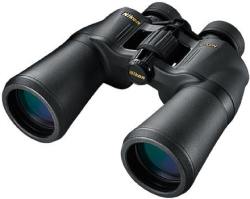 These 7x50 Nikon binoculars are very popular amongst the astronomy community and at this price, with a good field of view and decent quality features, it is easy to see why:
These 7x50 Nikon binoculars are very popular amongst the astronomy community and at this price, with a good field of view and decent quality features, it is easy to see why:
Main Features
- Aluminum housing
- Bak-4 porro prisms
- Multi-coated optics
- Twist-Up eyecups with 17.6mm of eye-relief
- Tripod-adaptable
- Field of view: 335 ft @1000 yds
Main Points
Not Fully Multi-Coated – Once again these are Multi-Coated, not Fully Multi-Coated, which is a little of a disappointment as it tells us that only some, not all lens surfaces have anti-reflection coatings. Thus compared to higher end optics, these will capture and transmit less light and thus produce a less bright image.
BaK-4 Prism Glass Glass – A definite improvement on the Celestron above is the fact that these have higher quality BaK-4 Porro prism glass.
Weather Resistant – Whilst not completely sealed, they are described as weatherproof. This should keep out light rain and dust. However, should you also require your 7x50 binoculars for marine use or often go out in the worst weather conditions, you may be better off with a fully o-ring sealed and thus fully waterproof instrument.
Eye-Relief – The 17.6mm of eye-relief is good and along with the improved twist-up eyecups makes them a solid choice for eyeglass wearers.
Prices & Where to Buy
At around $100 / £80, the 7x50 Aculon does look to offer very good value for money and is certainly one of my favorite choices at this low to mid price level. To compare the latest prices in your country, follow the link below:
Mid Range 7x50 Binoculars – approx $150 / £150
Here you should be looking for a binocular that has fully multi-coated optics and which is completely waterproof and fog proof as well as having a number of other small improvements. Below is my current favorite option at this level:
Sightron 7x50 SII Binoculars
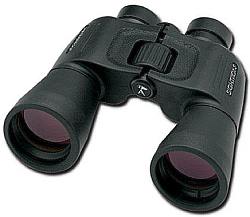 Unlike the Celestron or Nikons above, this is perhaps not a brand that everone would instantly recognise. However these are popular amongst the astonomy community and in my opinion and in terms of their features and componets deliver extremely good value for money:
Unlike the Celestron or Nikons above, this is perhaps not a brand that everone would instantly recognise. However these are popular amongst the astonomy community and in my opinion and in terms of their features and componets deliver extremely good value for money:
Main Features
- Bak-4 porro prisms
- Fully Multi-coated optics
- Waterproof
- 18.1mm of eye-relief
- Tripod-adaptable
- Field of view: 372ft @1000 yds
Main Points
Wide View – with a viewing angle of 7.1° or to put it another way a view that is 372 feet wide at 1000 yards away, these 7x50 Sightron SII binoculars make it easier for you to scan the night sky, locate objects and study them without having to move the view about.
Fully Multi-Coated – Every lens surface throughout the entire optical pathway on these Sightron SII Binoculars has multiple layers of an anti-reflection material added to them. This is my experience dramatically and perceptibly improves image brightness and quality.
BaK-4 Prism Glass Glass – Good quality optical glass is used on the prisms, for a better and brighter view.
Waterproof – Completely sealed, this is a good choice for camping and even taking on your boat or yacht. The seals also prevent dust from entering the system.
Eye-Relief – 18.1mm of eye-relief is excellent and a good choice for those who wear glasses during observation.
Protection – With these, you also get the benefit of a comprehensive Lifetime Warranty from Sightron.
Prices & Where to Buy
Currently retailing for approximately $140 / £150, I really do feel that these offer one of the best performance to price ratio 7x50 binoculars on the market. Check the link below for where to buy in your country:
High End 7x50 Binoculars – over $500 / £500
For those not wanting to compromise and who want the best views possible:
Fujinon 7x50 FMT Polaris Binoculars
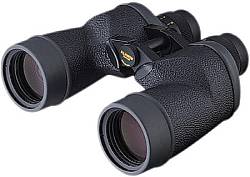 As well as astronomy, these are ideal for boating, general use, wildlife and certainly birding applications.
As well as astronomy, these are ideal for boating, general use, wildlife and certainly birding applications.
The 7x50 Fujinon FMT Polaris has a fully-sealed aluminum chassis and comes with a traditional and dare I say it, classy looking pebbled external finish. Although you can also get a Polaris FMTR version (see image below) that has a rubber armor with tethered lens covers, should you wish. Indeed if you are planning on also using them as a marine binocular, this will probably be the better option.
Rather than a focus wheel, these binoculars are fixed focus / focus free binoculars and thus once calibrated to your vision using each of the eye-pieces, you no longer have to alter the focus for any objects from medium range right to infinity and thus are particularly ideal for stargazing and boating.
- Individual Eyepiece (Fixed Focus System)
- Field flattener lenses
- Bak-4 porro prisms
- Fully Multi-coated optics (95% light transmission)
- Waterproof & Fogproof (Nitrogen Purged)
- 23mm of eye-relief
- Tripod-adaptable
- Field of view: 393ft @ 1000yds
Main Points
Field flattener Lenses – the fact that Fujinon has incorporated field-flattener lenses into the Polaris series is a definite indication of their very high quality. Only found on very high-end instruments, these eliminate many field aberrations that most leave uncorrected, with the result being much less distortion for a sharper, clearer images right to the edges of the view.
Very Wide View – At 393 feet wide at 1000 yards away, these Fujinon Polaris binoculars have a viewing angle of 7.5° which ranks them up there with the very best 7x50 binoculars.
As I have mentioned earlier, a wide view has many advantages, especially for astronomy making it easier to find objects and scan the skies. It is also a feature that many birders look for as it makes locating and then following fast moving birds at closer ranges much easier.
Fully Multi-Coated – Fujinon have added their “special EBC coating” to every single lens and prism surface throughout the whole optical system. They claim that this enables 95% light transmission across the full visible spectrum and thus are up to 15% brighter than many other high-quality binoculars.
Water & Fog proof – Fully O-ring sealed these binoculars are 100% waterproof. The interior is also filled with moistureless Nitrogen gas which prevents the internal optics from misting up which can easily occur when you have a rapid temperature change. So for example when moving from a warm house out into cold outdoors.
Eye-Relief – with these Fujinon binoculars you have a massive 23mm of eye relief. This gives you plenty of room to maneuver behind the ocular lenses to ensure that you can always get the full image without any black rings forming on the edges. This also makes them the ideal choice for eyeglass users.
Protection – For piece of mind and a demonstration on the faith that they have in their product, you get a fully covered lifetime Warranty from Fujinon.
Prices & Where to Buy
Depending on where you buy and which exact model you choose, these 7x50 Fujinon Polaris binoculars cost around $650 / £650, so by no means cheap, but as they often say: In life, you get what you pay for!

 Article | Posted by Best Binocular Reviews
Article | Posted by Best Binocular Reviews 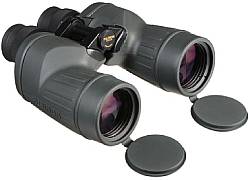

 Categories:
Categories:  Tags:
Tags: 
